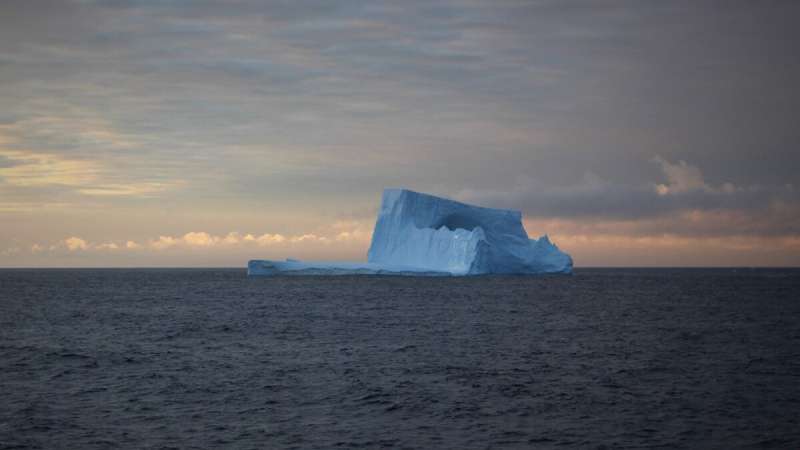New research could shed light on of how carbon dioxide release from Southern Ocean might affect climate change

In the Southern Ocean near Antarctica, deep-ocean water upwells to the surface, where it releases carbon dioxide that entered the ocean prior to the Industrial Revolution. This process is a key component of the global carbon cycle, and recent research has suggested that it returns more carbon dioxide to the atmosphere than previously thought.
Now, a new study published in Global Biogeochemical Cycles explores exactly where in the Southern Ocean carbon dioxide is released into the atmosphere, where this carbon comes from, and how various factors combine to drive these processes.
Building on earlier research, the scientists analyzed measurements that had been collected with ships and by Argo floats, free-drifting instruments that take measurements in the subsurface ocean. These data included observations of temperature, salinity, dissolved oxygen, pH, alkalinity, nutrient levels, and levels of dissolved inorganic carbon.
Using those data, the researchers made detailed calculations related to the partial pressure of carbon dioxide in upwelling water, which helps to determine its ability to release carbon dioxide into the atmosphere. They also explored how additional factors, such as biological processes and ocean circulation, drive spatial patterns of varying partial pressure of carbon dioxide in different ocean regions and at different depths—thereby influencing its release at the surface.
The analysis showed that preindustrial carbon dioxide is released primarily from a specific band of upwelling water that encircles Antarctica and lies between a region known as the Subantarctic Front and an inner boundary formed by the edge of the extent of sea ice during wintertime. This deep water comes from the northern Pacific and Indian Ocean basins, and it is rich in old carbon produced from organic carbon through a process known as remineralization.
The study also showed that low temperature and high alkalinity hinder carbon dioxide release from other locations of upwelling deep waters, despite their higher carbon content.
These findings could help inform future investigations of how carbon dioxide release from the Southern Ocean might affect—and be affected by—global climate change.
More information: Haidi Chen et al, The Deep Ocean's Carbon Exhaust, Global Biogeochemical Cycles (2022). DOI: 10.1029/2021GB007156
Journal information: Global Biogeochemical Cycles
Provided by American Geophysical Union
This story is republished courtesy of Eos, hosted by the American Geophysical Union. Read the original story here.




















